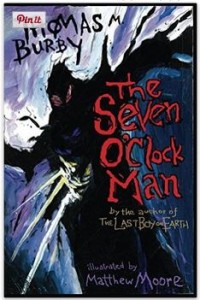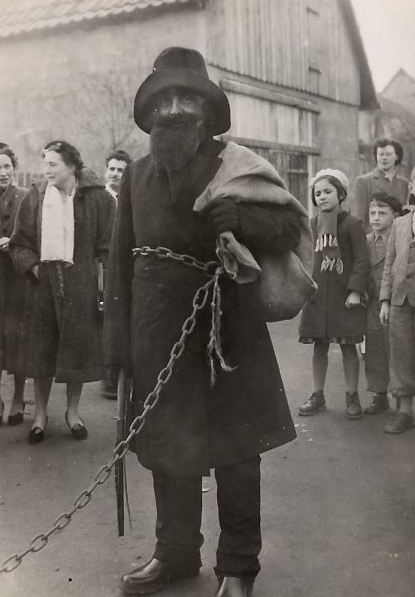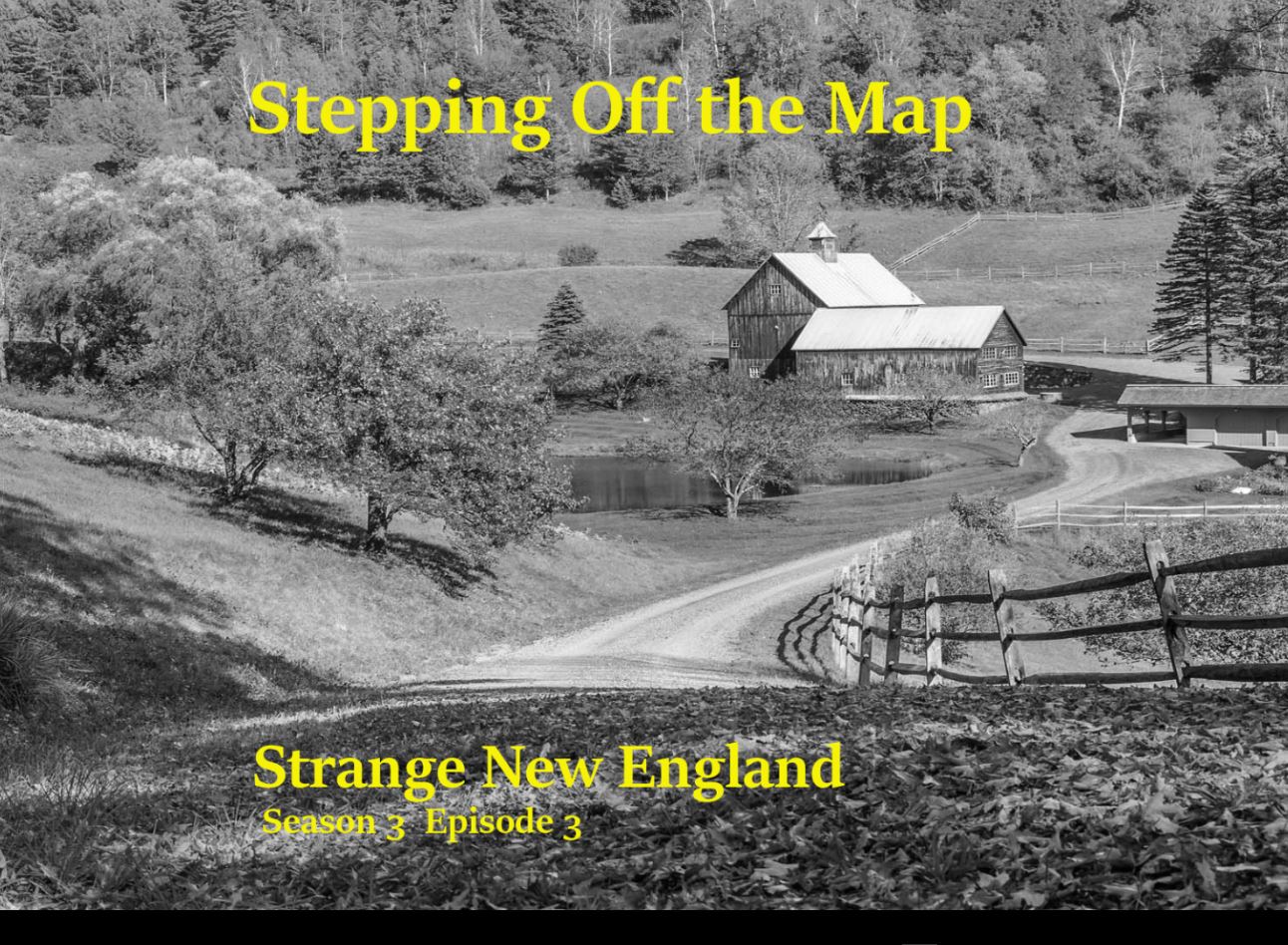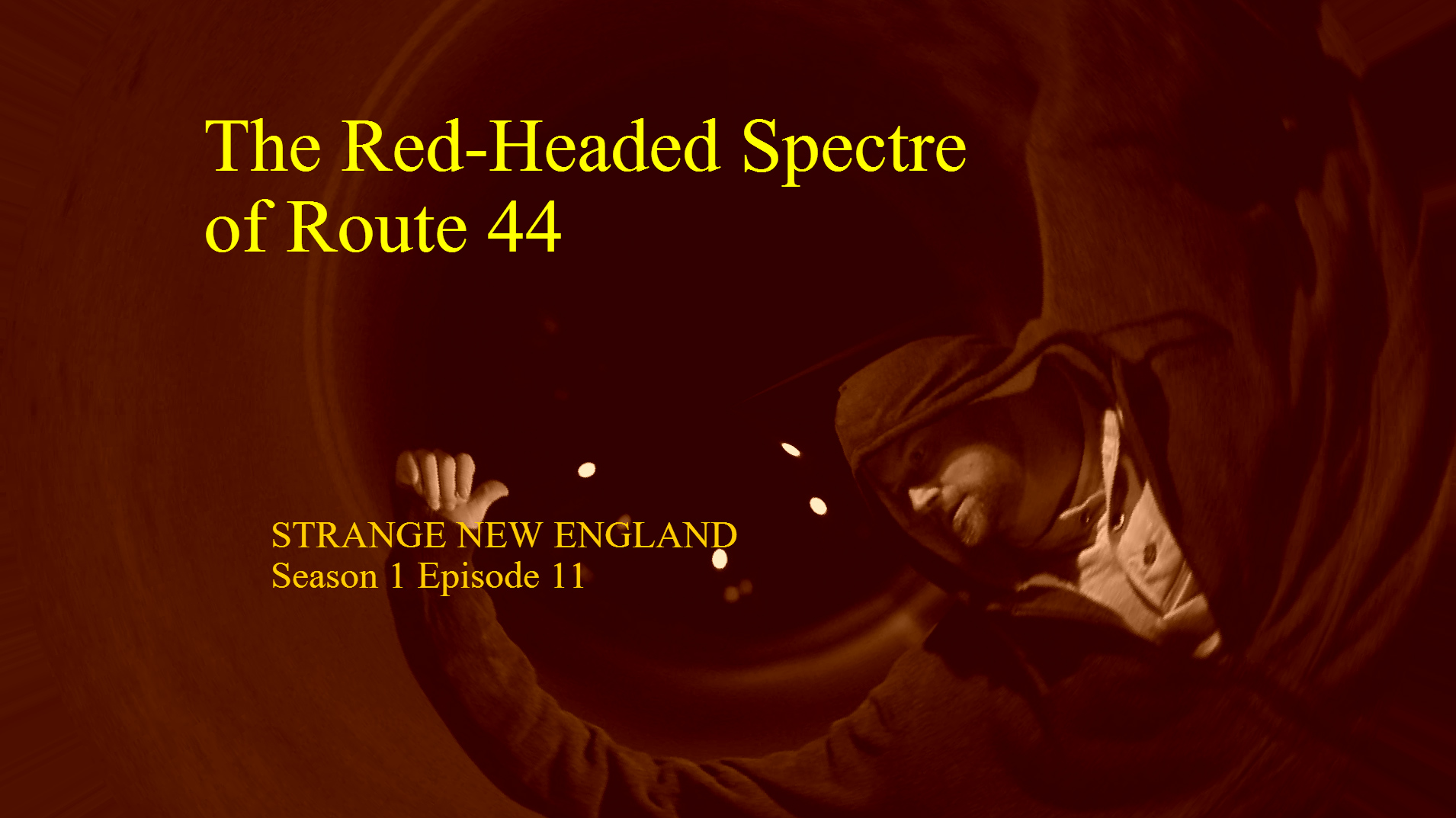In the early days of European settlement, the French people were among the first of Europe’s nations to interact with the Wabanaki federation of tribes. While some European nations took a more brutal approach to settlement, the French chose a much more peaceable pathway to settling the new world. Commerce formed the basis of their relationship with the Wabanaki tribes, but far more than furs, food, wood, tools and luxury goods was exchanged. When the business was done and suppers were eaten, French and Native storytellers would then exchange stories from their respective cultures as the campfire lit up the dark and cold nights.
One such imported tale did not appear around these campfires, however. Instead, The Seven O’Clock Man, or “Bonhomme Sept-Heure,” appeared at the bedsides of children, where the little ones were lulled to sleep by stories that most modern parents would never consider telling. Readers who know French well will notice that ‘bonhomme’s’ literal translation into English is “Good Man”. This is a common practice in Franco-American and Quebecois to give a pleasant name to a creature that is hellish or demonic. This is done so that the entity is not annoyed or displeased whenever his or her name is mentioned by others.
He is most commonly depicted as an old man with a heavy sack over his shoulders: a sack filled with children. To keep out the night time cold, he would wear a heavy hat and a heavy coat. He would come to the bedroom of a child who was supposed to be sleeping. If the child was still awake, he or she would be snatched and stuffed into the sack. All children who were taken by this figure were said to be eaten or otherwise never to return to their families again.
There are only a few variants on the tale, which sometimes arise from other folktales and sometimes come from being lost in translation from English to French. One version gives the Seven O’Clock Man abilities like the sandman, with a magical sand that can help children sleep by being blown into their eyes. It is likely that this was a more recent version which made the Seven O’Clock Man seem benevolent and scaring children into sleeping was no longer practiced by parents.
Another version of his name gives him an association with a figure who would have been well known by the French-Canadian and Franco-American communities. In a time when the most people did not typically receive anything more than an eighth-grade education, finding quality medical care was a challenge. Most doctors did not complete the rather lofty series of courses and residencies that they do today. In the past, when educated doctors were not present, folk healers who had medical specializations were consulted. One such figure is the bone-setter. His job, as his name implies, was to reset out of place bones and help broken ones heal properly. Unfortunately, the bone setter’s work was as painful as dentistry prior to the invention of anesthetics. Children would hear the screaming patients and come to fear this man, even though he was benevolent in his purpose.
This led to a possible French translation of the word ‘bone-setter’ into the phrase ‘bonhomme sept-heures’, which sounds similar, but is nothing close to the original English phrase. Parents would tell their children that the bone-setter would bring with him the agonies of his trade, so that if they did not sleep when they were supposed to, they would wish they had. Bill Casselman, who has studied the origin of many Canadian words, claims that the name ‘bonhomme’, for the devil, existed before the name “Bone-Setter” and happened to sound similar to the English phrase. This coincidence may have led parents to associate the two for the sake of ensuring proper behavior from their children.
Another possible mistake in translation could have come from a similar phrase: the bomb-setter. This occupation was another name for lamp-lighter. Before electricity, there were people responsible for lighting the gas lamps of city streets. To ensure that there was light at the right time, the bomb-setter would work hard to ensure the gas lamps were lit before 7:00 PM; the time when the Bonhomme Sept-Heures was said to strike. It is possible that this is the version that city-dwelling French people told their children. There is evidence that this particular type of bogeyman may itself be separate and have the name ‘bonhomme basse-heures’ in Montreal and France.
In a Quebecois production, with a name that translates to “The Legends of Dark Earth“, the story of the ‘Bonhomme Sept Heures’ is given the cruelest twist of all. In this short animation, a brother and sister work at the mill for a little too long find themselves fleeing from a cloaked figure on a horse running after them as the clock strikes seven and the sun sets. They make the horse run at full gallop, believing that it was the Seven O’Clock Man who is chasing after them. The brother throws a bag of flour at the cloaked rider, sending him and the horse flying off a cliff. But as the rider falls, the boy makes a horrifying discovery. It is his father, who is trying to escort his children home. The whole time, the boy believed his father slept in the back of the wagon. In truth, the third passenger in their wagon was The Seven O’Clock Man, who rises up and takes away the children, never to be seen again.
Today, the Seven O’Clock Man is still a widely told story in Canada, particularly Quebec. Despite the high concentration of French-Canadian ancestry in Maine and New England, the Seven O’Clock Man is not a widely told story in Maine. It is a story that has faded into obscurity in America as more and more New Englanders grow up speaking English and not French. Sometimes, they may still tell the story in The St. John River Valley or enclaves like Lewiston, where there are still French Speaking Mainers.
This means that Madahodo, who was said to haunt the Allagash wilderness, may have a French-Canadian neighbor lurking in the woods, streets and farm fields of the St. John River Valley who is every bit as dreadful in his purpose and demeanor as Madahodo.
It would not be hard to imagine that, like the French and Indian traders from centuries past, The Seven O’Clock Man and Madahodo might share a campfire on occasion in a place no human eyes can see them, trading malevolent trophies and ideas and hatching schemes for the English speaking people who conquered both of their people. While it may seem in modern times that the English and Iroquois won the day, the night is still an unconquered country of shadows and stories.
Interested in a ripping good tale about The Seven O’Clock Man? Why not take a look at our new novel, “The Seven O’Clock Man,” available on Amazon.com
Check out the first few chapters for free by downloading a sample: CLICK HERE TO CHECK IT OUT

Bibliography
French Language Wikipedia Article about Bonhomme Sept Heures
English Wikipedia Article about The Bogeyman, which mentions Bonhomme Sept Heures
Illustrator Doug Buddy’s Blog article about the Seven O’Clock Man
National Geographic Canada’s Article of five Acadian legends
USC’s Digital Folklore Archive
Shrine O’Dreams: Le Bonhomme Sept Heures
Folkloric Spirits of The Americas-Bonhomme Sept Heures
Bill Casselman-Bonhomme Sept-Heures
Les sombres legendes de la terre-Bonhomme Sept Heures





omg best site of my life